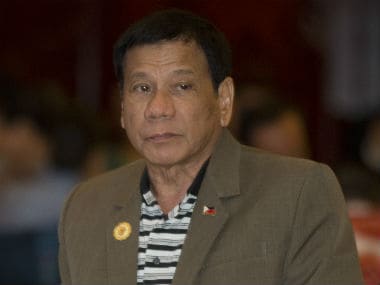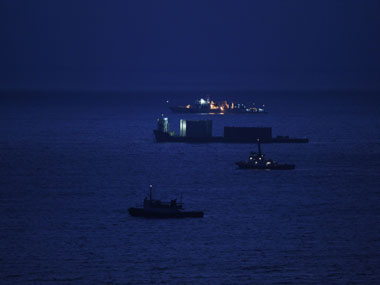The recent past witnessed three disparate events within and in the neighbourhood of India that created rumblings in the strategic landscape, and raised the same question: How well-prepared is India to meet the threat from China, its northern neighbour?
The first of these events was in China. A follow-up action, after the 19th Party Congress in 2017, initiated by the ruling Communist Party to remove the constitutional clause that limits the president's tenure to two five-year terms. Thus, setting the stage for Xi Jinping’s presidency to go on well beyond 2022. He indicated that he plans to steer the country to achieve its aspiration of being a major player on the world stage, by 2035. Therefore, there is a genuine cause for concern for the world — that it will have to deal with a more assertive and belligerent China. An outcome of 'resurgent nationalism' prevalent in China, due its sustained economic growth and now, the likelihood of continuation of a strong proactive leadership.

File image of Chinese President Xi Jinping. AP
With the existing 'bones of contention' of disputed borders and the lingering thorn of the providing sanctuary to the Tibetan leadership and diaspora, India is likely to witness hardening of Chinese stance in dealing with issues of discord and its increased influence in India's neighbourhood/'near abroad'. Second, was the underlying implication in the statement of the COAS General Bipin Rawat, at a recent interactive forum, that China's growth model was worth emulating as it ensured concurrent development of its economic and military power. Saying the unsaid that India was not doing enough to sharpen its 'hard power' in synchronisation with its economic growth.
Thirdly, was the deposition made by the VCOAS to the Parliamentary Standing Committee for Defence, that reinforced the statement implied by Rawat, that the budget allocations were woefully short to meet the multiple requirements of servicing the 'ongoing' schemes for enhanced security of military establishments, acquiring urgent military hardware for mitigating the existing deficiencies of the army, infrastructure development along the northern borders and overall modernisation.
These events have drawn attention to the growing asymmetry with China, on all fronts. It demands that the instruments of national power harmonise their actions urgently to meet the challenge of dealing with a strong, belligerent China under an assertive leader. The requirement of suitable modernised military with technologically vibrant surveillance and monitoring systems is a must. But, concurrently there is a need for an effective, enabling surrounding landscape. Shared stability and goodwill with the neighbours will safeguard long-term Indian interests and also ensure that the country is insulated from any mischief that China may try to create in the immediate neighbourhood. Therefore, a quick look at the contours of our future engagements with the South Asian countries is required.
Diplomatically, there is a need to re-examine the existing irritants that are clouding our cultural and historical bonds with the neighbours. The primary need is a change in the attitude and demeanour in engaging with these countries. India has to move from being condescending and start dealing with them as equals. Simultaneously, there is a need to meet the timelines in the completion of our projects in these countries and provide the wherewithal as promised to them, during various levels of inter-State engagement. Thereafter, be largehearted in resolving outstanding bilateral/multilateral issues. It would not be wrong to state that the foundation pillars with all the neighbours are anchored on the issues of connectivity, trade and sharing of natural resources.
Let's take a look at the specifics with each of these countries:
In the case of Bhutan, there is a need to revisit the existing bilateral treaties, to harmonise their tenor with the aspirations of the present populace, while safeguarding the security imperatives of India.
With Nepal, there is a need to quell the growing sentiment, echoed by the actions of the present political leadership, that an 'anti-India' stance is an assertion of Nepal's independence and sovereignty. The transit treaty, road-rail-power linkages that have been on the anvil for long to give accessibility to landlocked Nepal and a balanced engagement with the Madhesis is something that needs urgent attention.
When it comes to Bangladesh, great inroads have been made for a lasting friendship, but the issues like the sharing of water and bilaterals for enhanced trade, IWT and migration need to be looked at on a priority basis.
Sri Lanka and the Maldives have different challenges that relate to their internal politics and India needs to be seen as a facilitator and 'all-weather' ally. New Delhi's policies and engagement with these countries mustn't be clouded by domestic politics.
Myanmar is blossoming after being in isolation for decades and India needs to be extremely sensitive to its aspirations. Not only is the country fundamental for the success of India's 'Act East' policy, but Naypyidaw's willing cooperation-cum-support is essential for resolving the internal dissension that is still afflicting the states in the North East. Better relations with the country are an urgent priority to achieve inclusive economic development of the region. The 'Free Move Regime' accord that exists between the two countries needs to be addressed with great sensitivity, due to the existence of strong traditional cross-border tribal linkages that need to be respected. The talk of border-fencing and other embargoes by interested parties and 'armchair' policymakers needs unbiased analysis.
The case of Pakistan is extremely vexed. The counter-narrative has to address ideological linkages that transcend both sides of the Line of Control. India must be proactive with a long-term, sustained national policy in dealing with Pakistan, that has the concurrence of all the major political parties. The national engagement cannot be captive to the political ideologues of the ruling political party. Diplomatic engagement should therefore be focussed to bring pressure on Pakistan in a constructive way, so that India can arrive at mutually acceptable 'CBMs' and concentrate on the much-needed socioeconomic issues.
On the economic front, there is a need to create strong dependent linkages within the region. With nearly 40 percent of the world population within South Asia, the internal demands/requirements can see shared economic prosperity. The economic model should be 'collaborative' instead of 'competitive'.
The strategic landscape also demands an approach that looks at collaborative security. There is a lot of talk of the emerging strategic quadrilateral between India, the US, Japan and Australia. Multilateral cooperation and engagement is a must, but we have to be conscious that this does not mutate into military blocs, like the NATO and Warsaw Pact. There is a need to develop support linkages with the ASEAN countries — particularly, Indonesia, which due to its geographical location, has the possibility of becoming a maritime anchor in the region. Positive engagement with Vietnam is a good forward-thinking move.
India needs to be proactive in the Indian Ocean, but play a supportive role, without a physical footprint in the military sphere. Economic engagement and exploratory activities have to be dismembered from security issues in the South China Sea.
In conclusion, it is reiterated that India has to be realistic in reading the emerging security dynamics and give priority to building up its kinetic military might. The present apathy of the finance ministry and only lip service in the Ministry of Defence can be devastating for India's security. It all seems to be too little too late.
The author is former General Officer Commanding-in-Chief of the Indian Army
Published Date: Mar 15, 2018 10:58 AM | Updated Date: Mar 15, 2018 10:58 AM



